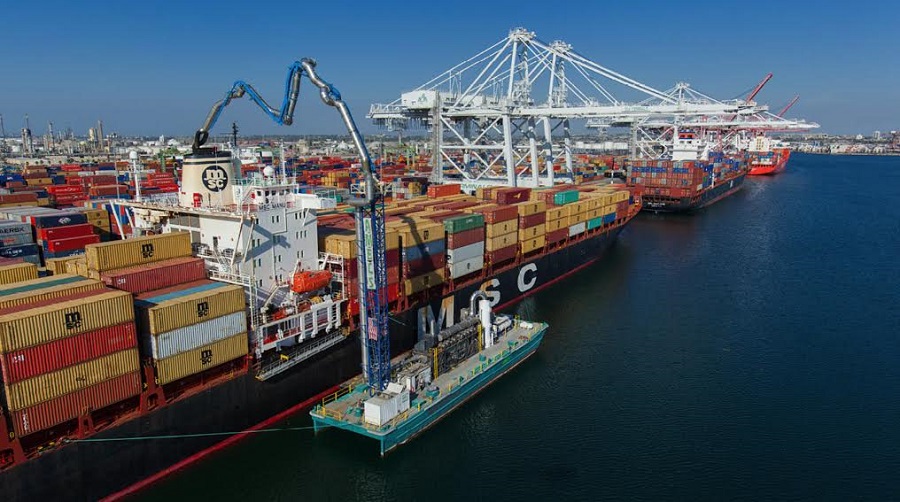
File photo.
The congestion and type of energy sources used by ships at the Long Beach port affected air quality, resulting lower decreases in the emissions of harmful chemicals, despite overall gains in environmental safety, according to a release.
The 2015 annual inventory of port emissions, conducted by an independent consultant, found smaller decreases in emissions between 2005 and 2015, in comparison to 2005 and 2014—results that port officials attributed to unusual number of vessels awaiting a chance to dock at the port that year.
“The latest emissions inventory shows the effects of last year’s congestion and increased ships at anchor. Thanks to labor and shipping partners, we cleared the backlog quickly,” said Harbor Commission President Lori Ann Guzmán in a statement. “While we’ve had challenges, we continue to be committed to reaching our goal of zero-emissions operations. We are steadfast in our commitment to improving air quality for the region now and over the long term as evidenced by our recently approved $46 million mitigation grant program.”
The emissions inventory is conducted by the U.S. Environmental Protection Agency, California Air Resources Board and South Coast Air Quality Management District every year.
Specifically, diesel particulate matter decreased by 84 percent between 2005 and 2015, slightly less than the 85 percent reported in 2014, and nitrogen oxides and greenhouse gases decreased 48 percent and 14 percent respectively, compared to the 50 percent and 21 percent decreases recorded in 2014.
Meanwhile, sulfur oxides decreased the same amount as recorded in 2013, down 97 percent. Notably, annual container traffic increased 7 percent, or 296,000 TEUs in the same period, perhaps explaining smaller decreases in emissions.
While at anchor, the ships used auxiliary engines to run systems instead of the shore’s electrical power outlets available at birth, as they lacked access to the shore’s power sources while awaiting their chance to dock.
The port is currently in the third phase of its Clean Air Plan, initiated in 2006, which focuses on strategies to significantly reduce pollution from ships, locomotives, trucks, terminal equipment and harbor craft that move cargo.
Media Contact: Lee Peterson, Port of Long Beach Media Relations Lead, 562.283.7715 (office), 562.519.2177 (cell), [email protected].

